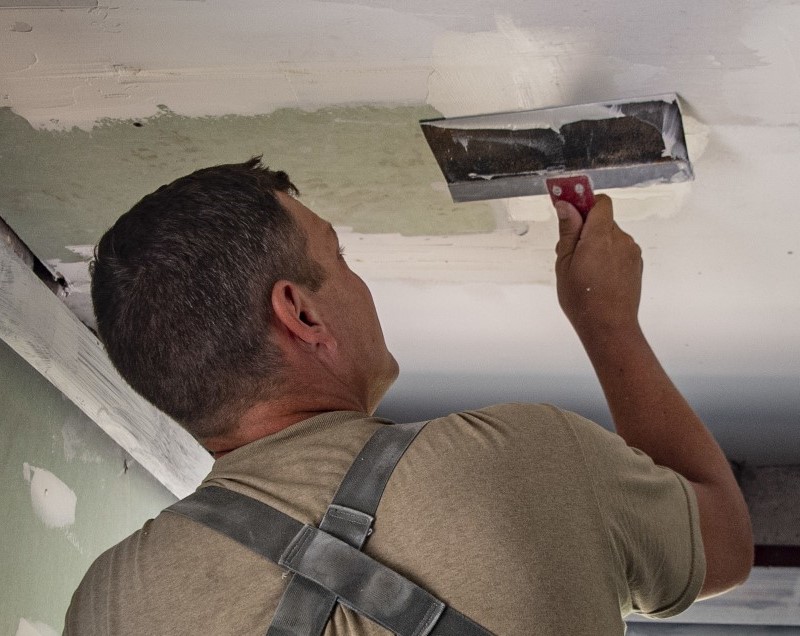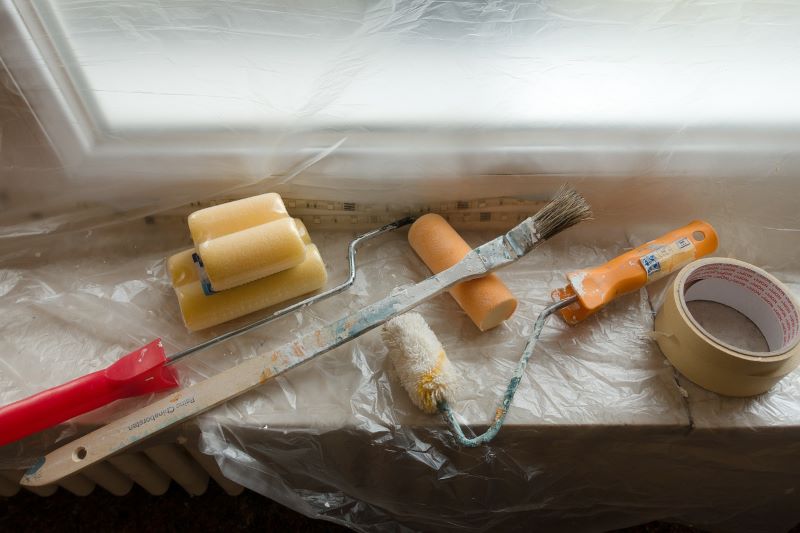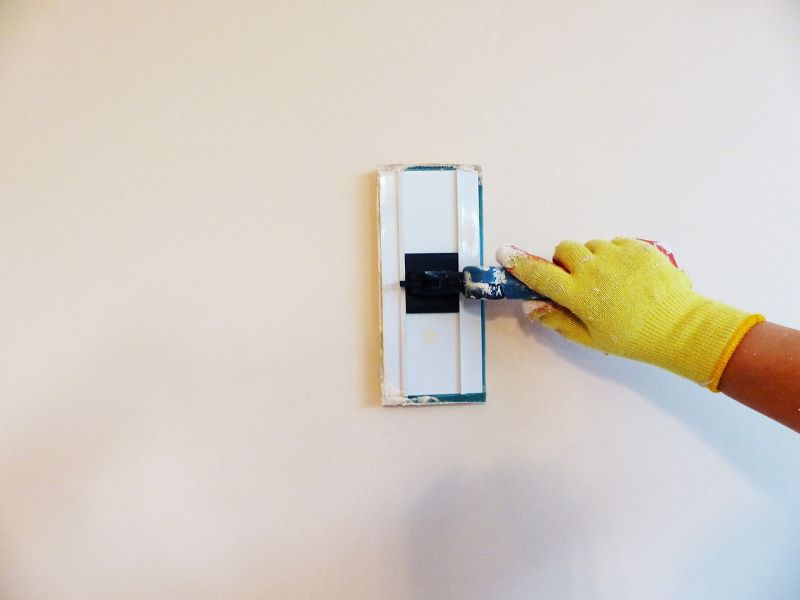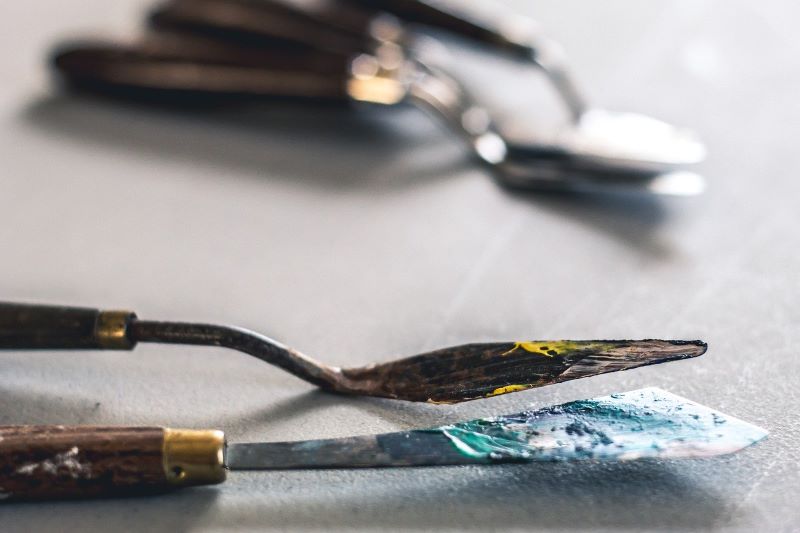Smooth and Simple Plaster Walls. Check How to Plaster a Wall
Finishing a wall with plaster is a popular method to get a smooth and aesthetic surface. Wall plaster provides an even finish and excellent durability. It is also far easier to paint over. It brings a unique character to your room, offering endless possibilities for decoration. Learn how to plaster a wall to make it perfectly smooth and even!

What is plaster?
Plaster is a very popular construction material. It can be used for coating walls and ceilings. It is one of the most commonly used product for finishing a room. It contains gypsum and chalk. Its preparation often involves using special substance that delays its fixture, called plasticizer. It determines how hard the plaster is. Using it results in shorter time of drying. Usually, one can start processing the surface approximately after 2 hours.
How to use finishing plaster?
Gypsum plaster is primarily used for smoothening the external surface of a wall. It should be used on surfaces pargeted with cement or lime plaster. This interesting substance is 100% ecological, giving a neutral reaction. Those properties prevent mold and fungi growth on its surface. Wall plastering is a process that prepares the surface for further actions, such as painting.

Plaster can be used on surfaces made of:
- gypsum boards,
- fibre gypsum boards,
- cement boards.
Be careful - you should avoid putting plaster onto a raw surface because this type of walls is not suited for such material. Do not apply plaster in wet areas - for instance in bathrooms. Excessive humidity might cause cracks and the plaster might peel off the surface.
How to plaster a wall? Step by step guide
The process of smoothing and evening the same spot over and over initially might seem tiresome. Finishing plaster walls requires a lot of precision. Don’t worry - after you get the feel of it, it shouldn’t be too problematic.
Remember that wall plaster layer cannot be too thick. Overly dense layers of plaster might crack and break after drying.
Preparing the surface - like a professional
At the very beginning you should prepare the room. Wall plaster might easily stain and damage furniture, therefore you should remove any objects from the room. If that’s not possible, cover it with protective sheets. Don’t forget to secure doors and windows.

The next step is priming the wall that is going to be plastered. If the surface has low absorptiveness, you should apply a product that increases adhesiveness. If the absorption is high, use the appropriate product to reduce it.
To mix the plaster up, take a bucket with water and pour the substance in it - adjust the amount so that you can work approximately for 30-45 minutes. It is extremely important - plaster loses its flexibility with time. Wait for several minutes and mix the plaster thoroughly using a drill.
Wall plastering - how to plaster a wall?
Start from putting the plaster onto the external corners. Use a float for application and a trowel for spreading. After finishing the corners, spread the plaster onto the whole wall. Planning to plaster the whole room? Apply the material onto the ceiling as well.
Specialists recommend putting only one layer of plaster. If needed, you may apply two or three thinner layers. Wait approximately 20 minutes between each application. Every new layer should be applied perpendicularly to the previous one.
Because plaster has low resistance to hits, the wall corners need to be strengthened with aluminium angles. It concerns the outer surface. To do it, sink the element in the parget and plaster it over.

After finishing, simply wait until the plaster walls dry completely. Check if the plaster is smooth and aesthetic. If not, you might additionally sand the surface. Remember to prime the wall before painting.
To achieve the best results, start painting no sooner than 24 hours after the plaster dries.
Wet plastering - what is it and how to do that?
Wet plastering is a very popular method to achieve a quick finish. It involves applying a layer of plaster onto the first layer that has not dried completely. This method requires extra caution, however it’s worth it - it significantly speeds up the work.
After the two layers dry, you can also smoothen the surface with water instead of using sand paper. Just dampen the wall with clean water and then smoothen it using a steel float. Make sure the second layer is dry before using this method.
All you need to plaster walls
The process of applying wall plaster requires using special tools and materials. Without a professional equipment, plastering will not be effective.
The tools you need to properly plaster walls:
- a trowel,
- a float,
- a brush for priming,
- a bucket,
- a drill with paddle mixer,
- sanding paper,
- aluminium angles,
- a level.

The most essential material is the right type of plaster. Gypsum plaster is the most common. The type of material you choose should be appropriate for the surface you want to plaster. Pick the right material depending on its purpose. You might use plaster also to fill small scratches and larger holes.
Regardless of the type, the surface always needs priming. To do this, use a primer dedicated for the wall you have. Otherwise, the product will not be as effective.
Check other home improvement lifehacks. Learn how to paint kitchen furniture, make pallet furniture for your garden. Also, find the trendiest wall colour for your interior.
📍 How to plaster a wall?
For the best durability, apply the plaster onto a clean and primed surface. Wait around 20 minutes before applying the next layer. This way the walls will look smooth and aesthetic.
Featured articles




